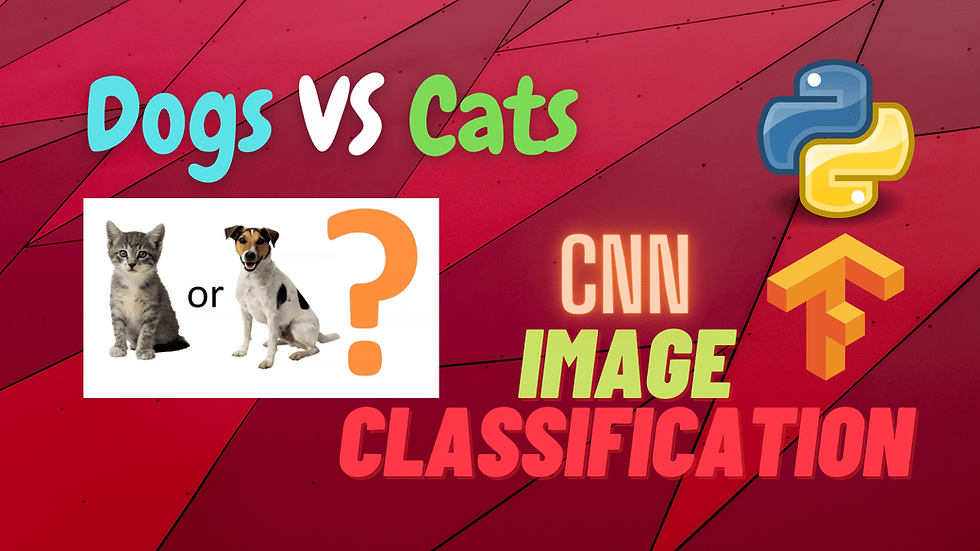Mall Customer Segmentation Analysis using Python | Clustering | Machine Learning Project Tutorial
- Hackers Realm
- Jun 30, 2022
- 4 min read
Updated: Jun 2, 2023
Dive into the realm of customer segmentation analysis with Python! This tutorial guides you through mall customer segmentation using clustering techniques in machine learning. Uncover hidden patterns, understand customer behavior, and optimize marketing strategies. Enhance your skills in data analysis and unlock the power of segmentation with this hands-on project tutorial. #CustomerSegmentation #Python #Clustering #MachineLearning #DataAnalysis #Marketing

In this project tutorial, we will explore Mall Customer Segmentation Analysis using python. Furthermore, we will discuss unsupervised learning, principal component analysis, kmeans clustering and elbow method in this tutorial.
You can watch the video-based tutorial with step by step explanation down below.
Dataset Information
You are owing a supermarket mall and through membership cards, you have some basic data about your customers. Spending Score is something you assign to the customer based on your defined parameters like customer behavior and purchasing data.
Attributes
Customer ID
Age
Gender
Annual income
Spending score
Download the Dataset here
Import Modules
import pandas as pd
import numpy as np
import seaborn as sns
import matplotlib.pyplot as plt
from mpl_toolkits.mplot3d import Axes3D
import warnings
%matplotlib inline
warnings.filterwarnings('ignore')pandas - used to perform data manipulation and analysis
numpy - used to perform a wide variety of mathematical operations on arrays
matplotlib - used for data visualization and graphical plotting
seaborn - built on top of matplotlib with similar functionalities
%matplotlib inline - to enable the inline plotting
warnings - to manipulate warnings details
filterwarnings('ignore') is to ignore the warnings thrown by the modules (gives clean results)
Load the Dataset
df = pd.read_csv('/kaggle/input/customer-segmentation-tutorial-in-python/Mall_Customers.csv')
df.head()
We can see the top 5 samples of the dataset
CustomerID is not necessary for the process so it can be dropped
# statistical info
df.describe()
Statistical information of the dataset with min. and max range in every column.
# datatype info
df.info()
Only one attribute is categorical and the rest are numerical
There are no NULL values present in the data, further preprocessing is not necessary
If any NULL value are present in dataset, they must be replaced with a value or drop the entire row
Exploratory Data Analysis
sns.countplot(df['Gender'])
We can see an almost equal distribution but female has majority
sns.distplot(df['Age'])
Good distribution of the data, majority of the customers between age 30 to 40 years old
sns.distplot(df['Annual Income (k$)'])
We can see the Annual Income, with a good distribution
sns.distplot(df['Spending Score (1-100)'])
Average spending is between 40 to 60
Correlation Matrix
A correlation matrix is a table showing correlation coefficients between variables.
corr = df.corr()
sns.heatmap(corr, annot=True, cmap='coolwarm')
The red color shows a positive correlation, and the blue color is a negative correlation.
In supervised learning, we can drop highly correlated attributes.
Since this is unsupervised learning, we will reduce the dimension of the dataset using principal component analysis.
Clustering
df.head()
# cluster on 2 features
df1 = df[['Annual Income (k$)', 'Spending Score (1-100)']]
df1.head()
First, Let us take only two attributes for processing
# scatter plot
sns.scatterplot(df1['Annual Income (k$)'], df1['Spending Score (1-100)'])
Scatter plot of Annual income and Spending Score
We can see the major part is in the center so that can be one cluster and the corners can be four other clusters or grouped for two other clusters.
Now we can start clustering the data
from sklearn.cluster import KMeans
errors = []
for i in range(1, 11):
kmeans = KMeans(n_clusters=i)
kmeans.fit(df1)
errors.append(kmeans.inertia_) errors list will contains the sum of squared distances of samples to their closest cluster center
# plot the results for elbow method
plt.figure(figsize=(13,6))
plt.plot(range(1,11), errors)
plt.plot(range(1,11), errors, linewidth=3, color='red', marker='8')
plt.xlabel('No. of clusters')
plt.ylabel('WCSS')
plt.xticks(np.arange(1,11,1))
plt.show()
We use elbow methods to find the number of clusters.
The shape in a graph represents an elbow.
We take the best cluster number from the joint of the elbow.
The best cluster appears to be 5.
km = KMeans(n_clusters=5)
km.fit(df1)
y = km.predict(df1)
df1['Label'] = y
df1.head()
Added cluster label for each sample
sns.scatterplot(x='Annual Income (k$)', y='Spending Score (1-100)', data=df1, hue='Label', s=50, palette=['red', 'green', 'brown', 'blue', 'orange'])
Scatter plot graph of the clustered data
Depending on the analysis of the data you can send specific offers to a group of customers in a cluster
Now let us use a three dimension data
# cluster on 3 features
df2 = df[['Annual Income (k$)', 'Spending Score (1-100)', 'Age']]
df2.head()
errors = []
for i in range(1, 11):
kmeans = KMeans(n_clusters=i)
kmeans.fit(df2)
errors.append(kmeans.inertia_)# plot the results for elbow method
plt.figure(figsize=(13,6))
plt.plot(range(1,11), errors)
plt.plot(range(1,11), errors, linewidth=3, color='red', marker='8')
plt.xlabel('No. of clusters')
plt.ylabel('WCSS')
plt.xticks(np.arange(1,11,1))
plt.show()
The most optimal cluster is still 5.
km = KMeans(n_clusters=5)
km.fit(df2)y = km.predict(df2)
df2['Label'] = y
df2.head()
Added cluster label for each sample in new data
# 3d scatter plot
fig = plt.figure(figsize=(20,15))
ax = fig.add_subplot(111, projection='3d')
ax.scatter(df2['Age'][df2['Label']==0], df2['Annual Income (k$)'][df2['Label']==0], df2['Spending Score (1-100)'][df2['Label']==0], c='red', s=50)
ax.scatter(df2['Age'][df2['Label']==1], df2['Annual Income (k$)'][df2['Label']==1], df2['Spending Score (1-100)'][df2['Label']==1], c='green', s=50)
ax.scatter(df2['Age'][df2['Label']==2], df2['Annual Income (k$)'][df2['Label']==2], df2['Spending Score (1-100)'][df2['Label']==2], c='blue', s=50)
ax.scatter(df2['Age'][df2['Label']==3], df2['Annual Income (k$)'][df2['Label']==3], df2['Spending Score (1-100)'][df2['Label']==3], c='brown', s=50)
ax.scatter(df2['Age'][df2['Label']==4], df2['Annual Income (k$)'][df2['Label']==4], df2['Spending Score (1-100)'][df2['Label']==4], c='orange', s=50)
ax.view_init(30, 190)
ax.set_xlabel('Age')
ax.set_ylabel('Annual Income')
ax.set_zlabel('Spending Score')
plt.show()
3D scatter plot graph of the data
ax.scatter() - plots the data points by filtering and specify the color for each cluster
You may change the view_init() parameters for a different angle view of the scatterplot
You may use different plot method for a different view.
Final Thoughts
You can use different hyperparameters to obtain different results.
You need to find the best number of clusters based on the data available.
In this article, we have analyzed the Mall Customer Segmentation Analysis as a clustering problem using machine learning. Likewise, we discussed unsupervised learning with clustering using elbow method.
Get the project notebook from here
Thanks for reading the article!!!
Check out more project videos from the YouTube channel Hackers Realm







Comments